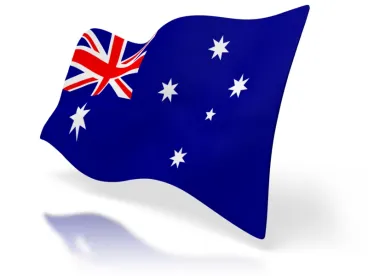BACKGROUND
As a small island nation, Australia has always been dependent on international trade. Its favourable terms of trade have helped it withstand many external shocks throughout its history. Whilst Australia's global supply chains have withstood the disruptions caused by the COVID-19 pandemic, it has highlighted the vulnerability of these integral supply chains, and Australia's ongoing economic prosperity, to other future shocks.
Within this context, the Productivity Commission has been asked to examine the nature and source of risks to Australia's critical global supply chains and develop strategies to mitigate such risks.
The Productivity Commission has recently released its interim report into these vulnerable supply chains (Interim Report). The Interim Report has a specific focus on Australia's role as an importer.
FINDINGS
Some noteworthy findings of the Interim Report:
-
One in 20 Australian imports may be vulnerable to concentrated sources of global supply.
-
Most vulnerable imports are consumption or intermediate goods with fewer capital goods (although these represent the highest share of vulnerable imports by value).
-
The main supplier of vulnerable imports is China – accounting for two-thirds of those products.
-
Vulnerable imports are a small share of the goods used in the nominated essential industries for the wellbeing of Australians – logistics, energy, health, government, communications, water and banking.
-
Effective risk management requires a good understanding of a firm’s risks to ensure that the net benefits of any investment to mitigate the costs of disruptions are matched by their potential effects and costs.
-
Risks are best managed by those who have direct incentives to mitigate against them. Firms are primarily responsible for managing risks in their supply chain. Governments have responsibility, like any firm, to manage risks in supply chains for which they purchase and/or deliver goods and services directly, particularly when these are goods and services in essential industries.
-
There are conditions where government intervention in private sector risk management may be justified, however the net benefit would have to outweigh the possible costs.
Whilst the findings that vulnerable imports represent a small share of essential goods and services are encouraging from a macro perspective, individual firms will need to carefully analyse their supply chains and networks with respect to their particular products and services.
Firms can do this by:
Adopting Risk management strategies:
-
Prevention – eg locating essential supply chain elements in less disruption-prone areas, choosing suppliers that are less vulnerable to disruptions, investing in risk management for critical suppliers
-
Preparedness – eg holding buffer stock and supplier capacity, diversifying supplier networks and geographic footprint, use of contingent contracting, insurance
-
Responsiveness – invest in early detection, flexible manufacturing processes, dynamic pricing and promotions
-
Recovery – develop post-disruption recovery plans.
Taking advantage of technological advancements:
-
Internet of things – allowing tracking of location, weather, traffic patterns and bottlenecks
-
Blockchain – in which records of an asset or transaction and the origin of goods is maintained in different locations
-
AI, machine learning, and analytics – in which warehouse operations, transport and logistics and inventory management can be automated.
Accepting the support of governments in the form of:
-
Provision of information and expertise of its agencies – eg Bureau of Meteorology, CSIRO and industry regulators
-
Financing support from Commonwealth and State / Territory Governments and their agencies – eg Austrade, EFIC, CEFC and ARENA.
-
Dual purposing existing legal obligations – eg firms who are obliged to report on their supply chains under the Modern Slavery Act 2018 (Cth) and the Security of Critical Infrastructure Act 2018 (Cth) could use the analysis conducted to discharge such obligations to mitigate risks of supply chain disruption.
AUSTRALIA'S DOMESTIC CAPABILITY
The Interim Report's finding that "risks are best managed by those who have direct incentives to mitigate against them" is a welcome contrast to the 'government knows best' approach. However, in light of an ongoing trade war between China and the United States, geo-political instability in the Asia-Pacific region and the recent EU controls on vaccine production, Australian firms need to be prepared for a higher degree of vulnerability in their supply chains.
Domestic manufacturing industry proponents have used the pandemic to reignite discussion about onshoring. The Interim Report noted that onshoring does not eliminate all supply chain risks, with domestic production facilities and transport networks vulnerable to onshore risks.
Recent examples include natural disasters and state-based health regulations (including border closures) during the height of the pandemic which slowed the movement of goods around Australia. The costs of onshoring include maintaining higher costs of production, due to higher input (particularly labour) costs and to foregoing economies of scale. The local production cost premium was previously identified by Ford and Holden as a reason for moving offshore.
Realistically, onshoring cannot eliminate risks associated with exposure to global supply chain disruptions. Complete insulation from disruptions is unlikely because most domestic production also relies on some imported inputs.
NEXT STEPS
Submissions and comments are now open on the Interim Report. It is anticipated that a final report will be published in late May 2021 and will include an analysis of disruptions to supply chains that may affect exports.





 />i
/>i

